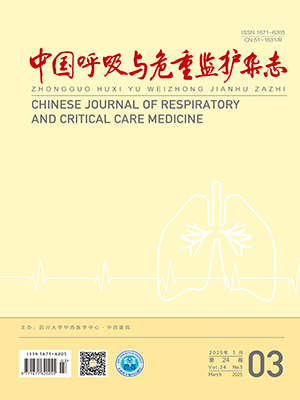Objective To evaluate the clinical significance of epidermal growth factor receptor EGFR) mutations in the treatment of non-small cell lung cancer ( NSCLC) . Methods Plasma DNAs solated fromblood specimens of 170 NSCLC patients, who were admitted in the First Affiliated Hospital of uangzhou Medical College from December 2005 to December 2007, were subjected to the test of EGFR utant-enriched PCR. The correlation of mutant detection with clinical characteristics was analyzed as well.Results Out of the total 170 patients, EGFR mutations were identified in 77 cases ( 77 /170, 45. 3% ) .EGFR mutations were more frequent in the patients with adenocarcinoma ( P lt; 0. 001) and in the nonsmokers P =0. 001) . In the 33 patients treated with gefitinib, those with mutations ( + ) showed a higher esponse rate and prolonged progression-free survival after the treatment compared with those with mutations( - ) ( P =0. 001 and 0. 001, respectively) . Conclusions EGFR active mutations can be specifically and ensitively detected by EGFR mutant enriched PCR assay. Plasma EGFR mutants detection is valuable in uiding clinical decision.
Citation: HE Chen,LIU Ming,ZHOU Chengzhi,XU Jun. Clinical Significance of Epidermal Growth Factor Receptor Mutations from Patients with Non-Small Cell Lung Cancer. Chinese Journal of Respiratory and Critical Care Medicine, 2011, 10(3): 273-277. doi: Copy
Copyright © the editorial department of Chinese Journal of Respiratory and Critical Care Medicine of West China Medical Publisher. All rights reserved




